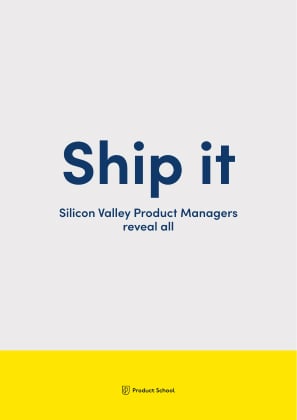Updated: November 15, 2024- 16 min read
Last-minute changes, technical glitches, stress, cross-department (dis)organization, overtime (like, a lot of it), even inflation, pandemics, and other market disruptions... Launching a new product is a difficult business.
Having wrestled the beast, you might wonder if there's even a remedy for the chaos of product launch. Sure, you had a product launch plan. Yes, you mulled things over. People put in blood, sweat, and—on some occasions—tears. But could you have anticipated the sheer variety of curve balls?
Well, surprisingly, you could have! To a great extent, at least.
Ready to Master The Art of Product Launches?
Get an in-depth understanding of the critical elements that make a launch successful with our free Product Launches Micro-Certification (PRLC)™! Whether you're a seasoned pro or just starting, this is your chance to dive deep into iconic launches, understand foundational elements, and craft exceptional go-to-market plans.
Enroll now for free
In this article, our mission is to hand you the roadmap to a successful product launch, the culminating moment that tops off the entire product management process. We've boiled down decades of expert knowledge to ensure you launch a rocket, not a paper plane tossed around by gusts of market winds. First, though…
Product Rollout Stats
Spoiler alert: Getting a product to the market means you're playing against the odds. If that sounds hard, consider this: it's better to sober up than to hold onto one extra reason to slack about maximizing your launch efforts. Your product deserves better.
Here's some market data stacked to support our claim:
"Underprepare and Fail". Around 95% of newly launched products fail, according to Clayton Christensen, a professor at Harvard Business School. 'Lack of preparation' happens to be one of the common issues during product launches.
Market Roulette. Only 40% of products developed by companies make it to the market, and among those, only 60% generate revenue. Getting to market does not guarantee immediate financial success.
Consumer Behavior. 1 in 5 consumers purchases new products immediately after a product launch process, suggesting that initial buzz can significantly influence early product adoption and sales. However, only 11% of these new product consumers remain engaged after 52 weeks of product launch activities.
"And then what?" Only 20% of new releases last beyond two years after they launch a product. Having a successful launch doesn’t guarantee long-term success.
As you see, each phase of a new product launch - pre, mid, and post-launch - presents its own unique challenges. It's undeniably complex and, frankly, one playbook doesn’t win in every phase. But, understanding these hurdles can offer a solid foundation to create a product launch plan that minds all the intricacies.
What Is a Product Launch Plan?
A product launch plan is a detailed roadmap that outlines all the steps required to bring a new product to market successfully. It covers every phase, from initial market research, creation of a product strategy, and product management in general to marketing strategies, launch, and post-launch activities.
Here's why product launch planning is crucial:
To ensure thorough preparation. It ensures that all necessary preparations are made before the launch. Every team involved in the launch, as well as all the steps in cross-collaboration, should be well prepared—whether it's in the form of a well-set strategy or simply following a plan template and a product launch checklist before and after the launch campaign.
To align team efforts. A well-structured product launch plan aligns all teams—marketing, sales, product development, and customer support—ensuring everyone is on the same page and working towards the same objectives. This coordination helps in creating a cohesive communication plan that supports the overall launch strategy.
To creates effective marketing buzz. It outlines the product marketing strategies and channels to be used to stir the launch excitement and attract early adopters. This might include social media campaigns, email marketing, press releases, and influencer partnerships. An effective product launch plan ensures that your marketing efforts are well-coordinated and impactful.
To steers the ship: The plan details the launch timeline for each activity, from the pre-launch or even dry runs to the full-scale launch activities. It helps manage resources efficiently, keeps everyone in the loop, and the project on track. This structured approach is essential for a successful product launch and ensures that every step of your product launch is meticulously planned and executed.
To irons out the kinks: After the product hits the market, the plan includes steps for nurturing the new-found audience, collecting feedback, analyzing performance, and making necessary adjustments. This phase is vital for ensuring long-term success and continuous improvement.
In essence, a solid product launch plan ensures your product development gives birth to a market-adopted solution. It helps you handle the twists and turns — and there'll be plenty. It cuts down on risks and boosts your chances of defying the odds like a champion.
From the pre-launch activities to the post-launch evaluation, having a detailed launch roadmap might be what tips the scales in your favor.
Your 8-Step Guide to a Successful Product Launch
Now that you understand the potential pitfalls and what it means to launch a new product with your hands raised high, it's time to roll up your sleeves and dive in.
We'll guide you through each phase methodically, ensuring you have every aspect of the launch covered. Let’s dive right in.
1. Understanding Your Product-Market Fit
Before you can embark on your journey, you need to understand where you’re going. Common sense, right? Well, you'd be surprised how much we rely on anything but rationale.
This is where the research enters the equation. By diving deep into target audience insights, you can tailor your products or services more precisely.
So, there's your first move. Conduct effective customer research!
Gather customer data, whether it's through surveys, interviews, or focus groups, and ensure your questions are clear and relevant. Once you know your customers, it's time to position your product as an obvious solution to their problems.
Market positioning is the primary reason why the release of the first iPhone was so iconic. Three familiar devices that people cared about - an iPod, a phone, and an internet communicator - all merged into one.
— Mariana Abdala - VP Product at Product School
Exactly. The most iconic product release dove deep into product positioning. They knew people used all three devices for a good reason and said one would do from now on. Too good to pass up.
Drawing inspiration from the lesson, find out what makes your product or service unique to your customers. What minimum lovable product would they likely adopt immediately? How are competitors failing to offer just the right thing? How could your product experience be better, smoother?
Knowing the market is crucial to crafting a product and a marketing plan that resonates.
Pro Tip: We understand that new products are rarely thoroughly researched before being built. Often, they are driven by the ad-hoc demands of stakeholders or owners. Still, there's value in conducting customer research even though you "already have a concept". You can use the research data to suggest pivoting and polishing to your decision-makers. Better late than sorry!
2. Connect Product Goals With Product Launch Goals
Having the two in sync is crucial for a successful launch. Here's how you can do it:
First, (1) define your product vision and goals. Be clear about what you want your product to achieve and the key product features you want to highlight. Are you looking to solve a specific problem - perhaps help people stay more productive? Do you want to capture a new market segment - remote workforce, maybe?
Next, once you settle on your product goals, (2) align them with launch goals. In other words, use a product launch to fuel your product growth. It’s a lever to get you closer to the bigger, long-term product success.
For example, if your product goal is to capture 10% of a new market, your launch goal might be to generate a certain number of product advocates within the first month of the launch campaign.
Next, be SMART about setting your goals. Set (3) specific, measurable objectives by breaking down your goals into smaller, actionable steps. If one of your product goals is to improve user engagement, a corresponding launch goal could be to achieve a specific number of user-generated discussions during the launch.
Here's what Product Launch Goals could look like:
Generate a specific number of leads or sales.
Achieve a targeted number of user sign-ups or app downloads.
Attain a specific amount of media coverage or social media mentions.
Secure X amount of positive customer reviews and feedback on a new feature.
Meet initial revenue targets within a set time frame.
By clearly defining and aligning these goals, you can ensure that your product launch is purposeful and strategically driven.
Pro Tip: Sure, the launch of a new product requires realistic expectations. However, setting goals is where you may want to reach a hair above your 'realistic comfort levels.' Set goals that feel just a bit above your reach - they shouldn't feel grueling or impossible, but slightly uncomfortable. It's a way many companies keep their teams alert and accountable for their efforts.
3. Building Your SWAT Launch Team
If you look at some of the best products, they really are an expression of a small number of people who had diversity of thought. They worked very closely together. They trusted one another and , I think, came out with great products. — Joff Redfern, Entrepreneur and a VP of Product at Atlassian
One often overlooked step in a product launch is not being serious about a dedicated launch team. To put it simply... If a thing as ‘trivial’ as planning a family reunion requires a team, then you should definitely consider gathering around your product launch heroes.
Therefore, assemble a diverse team with a product-first mindset. Call upon the product management team, product marketer, digital marketing expert, sales representative, support specialist, and other key members. Your team should be well-versed in different types of product launches, marketing campaigns, analytics, and handling the influx of new customers, orders, and logistics.
These team members are crucial at the launch of your product. They ensure all departments - marketing, sales, development, customer support, and more - are aligned with the launch goals. Their voice will carry the weight needed to make the launch a coordinated effort, not the hot mess it usually ends up being.
Pro Tip: Conduct a launch event simulation. This “dry run” will give your team the mild shock they need to prepare for the launch. They'll be able to pinpoint the critical areas, address arising issues, and manage the challenges of coordinating the effort.
4. Crafting Your Core Launch Plan Document
Your launch plan is a document that outlines every detail of your product launch. Think of it as your place of truth, guiding you from start to finish. Here’s how to create an effective launch plan that covers all the bases.
Settle on Key Value Propositions. We assist [ideal customers] who are struggling with [pressing problem] to achieve success through [outcomes/results]. Unlike [alternatives], [your solution] provides [main benefit], backed by [evidence you'll deliver on promise]. - Fill in the brackets, put the value of your product in writing, and stamp it above the fold!
Product OKR Template
Use this Product OKR template to set and track your OKRs (Objectives and Key Results). Align your team’s daily tasks with product and company strategy!
get free template
Outline Your Marketing Plan. Identify your target audience, key messages, and the channels you’ll use to reach them. Include timelines for each marketing activity, from social media campaigns and landing pages to email newsletters and other assets. Specify who will be responsible for each task and set clear deadlines to keep everyone on track.
Define Product Launch Promotion. Detail your strategies for getting the product into the hands of customers. Will you have teaser campaigns, a soft launch, or a big reveal? Are you offering pre-orders or special launch day discounts? Describe how you’ll create excitement around your product, and plan out your promotional activities.
Create a Roadmap. Just like a product roadmap, a launch roadmap template provides a visual timeline of your activities. This should include key milestones, from finalizing the product to marketing and sales efforts. Use this visual layout to track progress and ensure all team members are aligned with the launch schedule.
Plan Specific Action for Each Phase. Cover three specific phases: pre-launch, launch, and post-launch. For each phase, list the tasks that need to be completed. During the pre-launch phase, tasks might include finalizing the product, creating marketing materials, and training the sales team. The launch phase might focus on executing marketing campaigns and engaging with early adopters, while the post-launch phase might involve gathering feedback and analyzing sales data.
Include Additional Info. Add glossary, information about team members, means of communication, chat hot lines, legal and regulatory considerations, plan for keeping stakeholders informed, etc.
Pro Tip: Have one document as a place of truth that branches out to all other supporting documents. Assign one product launch team member as an admin, prioritize timely document updates, and visually friendly design. This should help everyone stay up to beat with the launch.
5. Pre-launch: Budget and Timeline
First, (1) create a project timeline. Set your product launch date as the anchor point and again, split the campaign into three phases - pre-launch, launch, and post-launch.
Identify key activities that need to be crossed off the checklist before you can move on to the next phase. Remember, some tasks must be completed before others can start. This helps you anticipate and avoid potential roadblocks or delays.
Then, (2) develop a budget to manage costs and allocate resources effectively.
Start by listing all the activities required for your product launch, including product development, marketing, PR, events, and promotions. Assign resources—people, time, and money—to each activity. Estimate the number of people needed, the time each phase and activity will take, and the budget for each.
You’ll ensure a well-coordinated and successful product launch by synchronizing the budget and timeline.
Pro Tips: Use the shared budget template — Excel, Google Sheets, or dedicated accounting software will do here. For each launch activity and task, create a budget detailing fixed and variable costs. Include a projection of revenue and profit based on pricing, sales forecasts, and conversion rates. Perform a variance analysis to compare actual expenses against the estimated budget, noting any discrepancies and their reasons.
6. Pre-launch: Get The Promos Ready
Mastering your product launch promotion is crucial when creating an effective product launch. Start by identifying all the information about your target customers and market and find the best channels before you even begin to promote the product. Here are some types of promos you might want to consider:
Social Media Posts
Email Newsletters
Blog Articles
Videos and Interactive Demos
Print Brochures
Customer Testimonials
Press Releases
Infographics and E-books
Webinars
Podcasts
Landing Pages
Product Datasheets
Case Studies and Whitepapers
Flyers and Posters
PPC Ads
Product Samples
Influencer Collaborations
Determine what types of content will resonate most with your audience. Are they more likely to engage with a video tutorial, a detailed blog post, or eye-catching graphics on social media? Create a content calendar to plan out when and where within the timeline will each content type be published.
Lastly, as Edith Harbaugh, the CEO of LaunchDarkly, shared in our podcast episode, encourage product managers to break down functionality into chunks of value. Then encourage marketers to find out who finds these chunks valuable and how they'd like to consume them.
This way, you're not just ‘listing new features’, you're showing how they kick pain points to the curb. Exactly what your customers want and what the majority of other brands fail to do. You're also ensuring product and marketing are working hand in hand, as they should.
Pro Tip: In the initial phase you might want to promote your 'short-attention' materials. They hold more potency to hook your customers in and get them interested. As you move along the timeline, start introducing longer and more detailed materials to convert the customers who showed interest.
7. The Big Product Launch
Launch day is when your hard work could get messy if you don’t use your product release strategy can help you stay organized and on track.
Once your product hits the market make sure you’re giving customers all your attention — they better be keepers. Needless to say, the minute you launch your product, monitor social media, engage with your audience, and keep an eye on sales and feedback.
Successful product launch requires having a product launch checklist of tasks you know you have to do:
Organize daily standups the week of the launch.
Have a crisis management plan in place for the week of the launch.
Consolidate your go-to-market strategy.
Double-check that all logistics for launch events and promotions are set for the big day.
Work closely with your sales team to quickly follow up on new leads.
Kick off your marketing campaigns right on schedule.
Actively interact with your audience and keep the conversation going.
Keep an eye on real-time feedback and respond promptly.
Regularly update and manage your social media channels throughout the day.
Swiftly handle technical or customer issues that arise.
Track immediate metrics, like sales numbers and website traffic.
Regularly check how new products or features behave with a bigger infrastructure load.
Pro Tip: Have a fast means of communication in place. No matter how well you prepare, something will go sideways. Be ready to address issues promptly and transparently.
8. Post-launch: Nurture and Assess
Product Retrospective Template
Experience continuous growth, learn from failure faster, and identify issues early with our Retrospective template.
GET THE TEMPLATE
After your product launch, you may have reached a wide audience, but that doesn’t always translate to immediate sales.
Remember, it often takes several interactions to convert a lead into a customer. So, keep the momentum going. Continue nurturing your leads with engaging emails, free trials, demos, blog posts, and other promotional content to nudge them through the sales funnel.
Once your launch phase winds down, typically about a week after the launch date, it’s time to enter the post-launch phase. This is where you track and evaluate the success of your product launch and marketing efforts. Spend time analyzing your results to understand what worked and what didn’t.
Consider these questions:
Did you achieve the goals set in the pre-launch phase? Why or why not?
How did customers react to your product? Were they satisfied or did they have suggestions for improvement?
Where did your campaign excel, and where did it fall short?
Were there any surprises you didn’t anticipate?
What lessons did you learn?
Reflecting on these insights will help you refine your strategies and make more informed decisions for the next product launch. Keep adapting and improving based on what you’ve learned to achieve your desired outcomes.
Pro Tip: Conduct a “lessons learned” meeting with your team. Document the key takeaways and incorporate them into your product changes or future launches. Every product launch is unique, but you can always draw some general conclusions from each one. This continuous improvement process is the secret sauce to improve your product and launch products successfully in the future.
Product Launch Planning: It's Not for the Faint of Heart
No matter how much you plan, every product launch is guaranteed to bring challenges and triumphs. That said, by planning your product launch with these steps in mind, you’ll create a path forward that not only navigates the complexities but also ensures you learn along the way.
Remember, every launch is a unique opportunity to grow and bring something amazing into the world. Happy launching!

Updated: November 15, 2024




